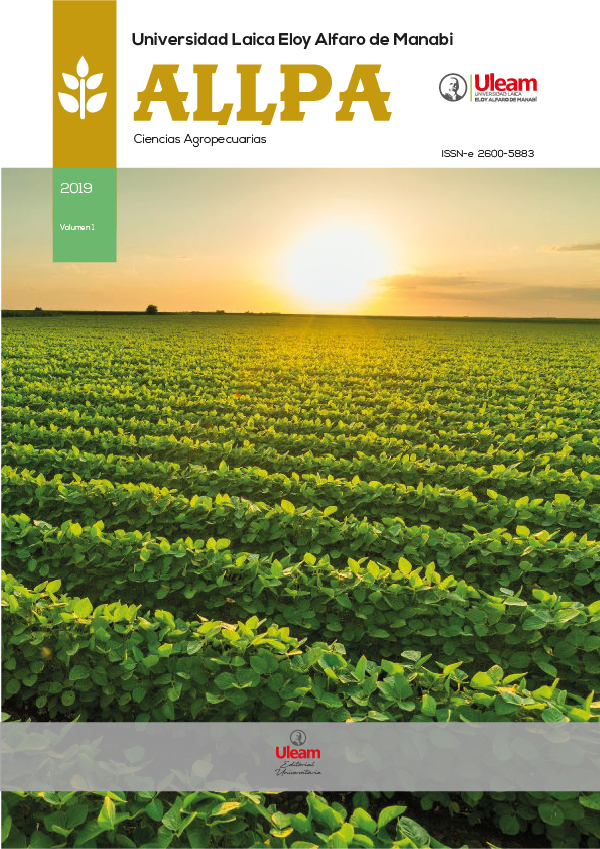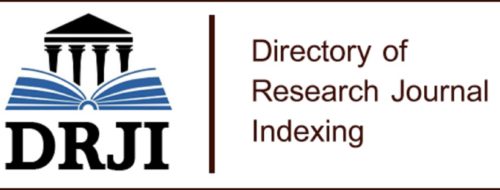Evaluation of entomopathogenic fungi in the control of the striped weevil (Metamasius hemipterus L) in the baby banana crop in La Maná
DOI:
https://doi.org/10.56124/allpa.v7i14.0080Keywords:
entomopathogen, orito, striped weevil, biocontrolAbstract
In plantations there are groups of pest insects that affect the orite crop, the striped weevil (Metamasius hemipterus L.) is one of the main pests of economic importance. These insects cause production losses due to deterioration of the plantation or by overturning of the plants. The objective of this research was to determine the biocontrol capacity of entomopathogenic fungi to control the striped weevil (Metamasius hemipterus) in the orite crop. This research was carried out in a baby banana plantation, located in the La Maná Canton, province of Cotopaxi. Ten adult striped weevil insects were captured and placed in each jar with 100 grams of pseudostem. The experiment had a completely randomized design (DCA), with a total of three treatments with five repetitions. The analysis of variance was carried out and the Tukey test was performed at 5% for the sources of variation that were significant. To carry out the analysis, the statistix 10 program was used. The data collected were the percentage of mortality and the action time of entomopathogens. It was evidenced that the application of entomopathogenic fungi Beauveria bassiana (Bassi 1879) and Metharizum anisopliae (Metschnikoff 1837) obtained a good percentage of biocontrol on the striped weevil (Metamasius hemipterus) with values of 79.86 and 77.86% respectively in tests of laboratory, because high mortality rates were obtained with the treatments established in the experiment. The application of entomopathogenic fungi carried out in this experiment produced a high mortality in a time similar to other tests carried out at the laboratory level.
Keywords: entomopathogen, orito, striped weevil, biocontrol.
Downloads
References
Armendáriz, I., Landázuri, P. A., Taco, J. M., & Ulloa, S. M. (2016). Efectos del control del picudo negro (Cosmopolites sordidus) en el plátano. Agronomía mesoamericana, 319-327.
Bustillo, P. A., (2006). Una revisión sobre la broca del café, Hypothenemus hampei (Coleoptera:Curculionidae:Scolytinae), en Colombia. Revista Colombiana de Entomología. 32 (2):101-116. 2.
Domínguez, M. (2020). Efectividad de un bio-insecticida fúngico con adición de atrayentes, aplicado en trampas para el control de Aedes aegypti (L.) [PhD Thesis, Universidad Autónoma de Nuevo León]. http://eprints.uanl.mx/21055/1/1080314520.pdf
Guiracocha, G., & Quiróz, J. (2003). Guía para el manejo Orgánico del Banano Orito.
Hernández, K. (2019). Análisis de las investigaciones sobre Metarhizium anisopliae en los últimos 40 años. Revista Mexicana de Ciecias Agrícolas. Vol 10. https://www.scielo.org.mx/scielo.php?script=sci_arttext&pid=S2007-09342019000900155
Kraševec, N., Panevska, A., Lemež, Š., Razinger, J., Sepčić, K., Anderluh, G., & Podobnik, M. (2021). Lipid-Binding aegerolysin from biocontrol fungus Beauveria bassiana. Toxins, 13(11), 820.
Lara-García, S., Vera-Aviles, D., Cabanilla-Lamulle, M., & González-Osorio, B. (2021). Desarrollo comunitario: Producción de Musácea en dos zonas de la costa ecuatoriana. Revista de Ciencias Sociales (Ve), 27(Esp. 3), 340-354.
Mise, E. F. (2019). Plan de exportación de banano orito de la hacienda Maria Elvira hacia mercado español [PhD Thesis, Zamorano: Escuela Agrícola Panamericana, 2019.]. https://bdigital.zamorano.edu/bitstream/11036/6613/1/AGN-2019-T026.pdf
Palacio, M. R., Salinas, D. G. C., Castillo, J. J. M., Magnitskiy, S., & Dávila, M. A. G. (2022). Nutritional diagnosis of banana (Musa AAA Simmonds subgroup Cavendish) with root sap analysis1. Pesquisa Agropecuária Tropical, 52, e71344. https://doi.org/10.1590/1983-40632022v5271344
Posada, F. J.; Bustillo, A. E., (1994). El hongo Beauveria bassiana y su impacto en la caficultura Colombiana. Agricultura tropical (Colombia) 31(3): 97-106. 3.
SENASA, S. N. de S. A. (2018). Productores peruanos de banana y plátano se forman en Manejo Integrado de Plagas. Infoagro Noticias. https://www.infoagro.com/noticias/2018/productores_peruanos_de_banana_y_plata no_se_forman_en_manejo_integrado.asp
Suarez, H. (2009). Patogenicidad de beauveria bassiana (deuteromycotina: hyphomycetes) sobre sitophilus zeamais motschulsky (coleoptera: curculionidae) plaga de maíz almacenado. Santa Marta, Colombia. file:///C:/Users/Dell/Downloads/Dialnet-PatogenicidadDeBeauveriaBassianaDeuteromycotinaHyp-4866552%20(1).pdf
Trejo, A.; Funez, R., (2004). Manual Técnico sobre Manejo integrado de la broca en Honduras. CIC JAP. La Fe, Ilama, Santa Bárbara. 44p.
Trejo, A. Lopéz J, Medina E, Herrera D. 2024. Eficiencia de Beauveria bassiana en el control de la broca del café (Hypothenemus hampei Ferrari), según producto comercial y dosis de aplicación. https://apps.iica.int/pccmca/docs/MT%20Frutales%20y%20Cafe/Martes%2030%20abril/7-Eficiencia%20de%20Beauveria%20Bassiana.pdf.
Uzakah, R. P., & Odebiyi, J. A. (2015). The mating behaviour of the banana weevil, Cosmopolites sordidus Germar (Coleoptera: Curculionidae). Scientific Research and Essays, 10(10), 348-355.
Valencia, A., Wang, H., Soto, A., Aristizabal, M., Arboleda, J. W., Eyun, S., Noriega, D. D., & Siegfried, B. (2016). Pyrosequencing the Midgut Transcriptome of the banana weevil Cosmopolites Sordidus (Germar)(Coleoptera: Curculionidae) reveals multiple protease-like transcripts. PloS one, 11(3), e0151001.
Vallejo E, L. F., & Sánchez B, R. (2010). El complejo de picudos (Coleoptera. Curculionidae) asociados a cultivariedades de plátano en Colombia. UNICALDAS. https://repository.agrosavia.co/handle/20.500.12324/13561
Published
How to Cite
Issue
Section
License
Copyright (c) 2024 Revista de Ciencias Agropecuarias ALLPA. ISSN: 2600-5883.

This work is licensed under a Creative Commons Attribution-NonCommercial-ShareAlike 4.0 International License.


.jpg)










